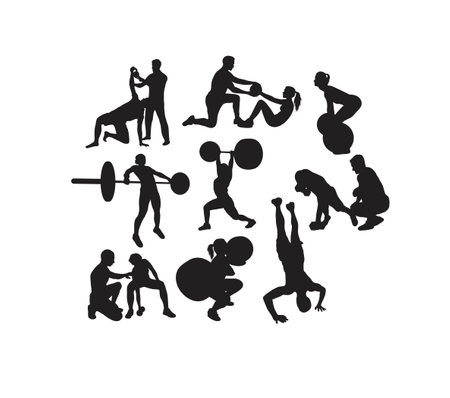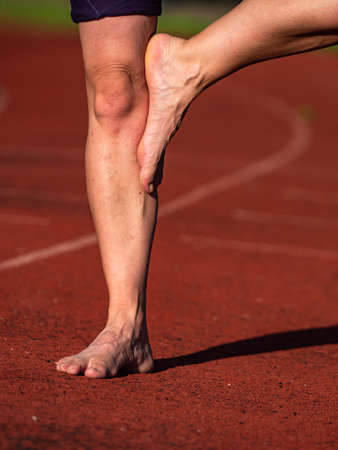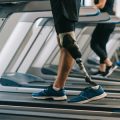Introduction to British Sports in Rehabilitation
In the United Kingdom, sport is not merely a pastime but an integral part of cultural identity and community life. Classic British sports such as cricket, bowls, and golf have long been celebrated for their social and recreational value. Recently, these traditional games are gaining prominence within rehabilitation programmes, particularly for individuals living with arthritis. Integrating classic British sports into therapeutic settings is more than a nod to tradition—it leverages familiar activities to foster motivation, engagement, and a sense of belonging among participants. Their low-impact nature and adaptable rules make them especially suitable for those managing joint pain or reduced mobility. By incorporating culturally significant sports into rehabilitation, practitioners can create environments that resonate with patients lived experiences while promoting physical activity. This approach not only supports physical recovery but also addresses the psychological and social dimensions of living with arthritis in the UK context.
2. Principles of Adaptation for Arthritis
When considering the adaptation of classic British sports such as cricket, bowls, or football for arthritis rehabilitation, it is essential to understand the physiological and biomechanical principles that underpin safe and effective participation. Arthritis affects joint structure, often leading to pain, stiffness, and limited mobility. Therefore, modifications should be underpinned by three core principles: maintaining safety, promoting joint mobility, and reducing pain or strain.
Physiological Considerations
For individuals with arthritis, the primary physiological requirement is to minimise stress on inflamed joints while encouraging gentle movement. Activities should be designed to avoid sudden changes in direction or high-impact motions that could exacerbate symptoms. Additionally, warm-up routines and cool-down stretches are vital to prepare the body and reduce post-activity discomfort.
Biomechanical Adaptations
Biomechanical adaptations focus on adjusting movement patterns and equipment to accommodate reduced range of motion and strength. For example, lighter balls in cricket or bowls can help decrease joint strain, while modified stances or grips may reduce pressure on the hands and wrists. The playing surface should also be considered—soft grass or indoor mats can lower impact on weight-bearing joints like knees and hips.
Key Adaptation Strategies
| Principle | Adaptation Example | Intended Benefit |
|---|---|---|
| Safety | Use non-slip surfaces; supervised sessions | Prevent falls and injuries |
| Joint Mobility | Gentle stretching routines; gradual progression | Maintain flexibility and function |
| Pain Reduction | Lighter equipment; shorter play periods | Avoid overexertion and minimise discomfort |
| Biomechanical Support | Supportive footwear; adaptive grips | Enhance stability and control movement |
The successful adaptation of British sports for arthritis rehabilitation requires a careful balance between enabling participation and prioritising health. By applying these principles systematically, patients can enjoy the social and physical benefits of sport while protecting their joints from further damage.

3. Case Study: Modified Lawn Bowls
Lawn bowls, a quintessentially British sport known for its leisurely pace and vibrant community culture, offers an excellent foundation for arthritis rehabilitation when thoughtfully adapted. This traditional pastime, often associated with village greens and friendly competition, can be modified to support individuals with varying degrees of mobility while retaining its cherished social dynamics.
Lighter Equipment for Greater Accessibility
The standard bowls used in the game can be quite heavy, posing a challenge for those experiencing joint pain or reduced grip strength due to arthritis. By introducing lighter-weight bowls specifically designed for easier handling, participants can engage more comfortably without risking further strain or injury. These adaptations ensure that the physical benefits of gentle movement and hand-eye coordination remain accessible to all.
Adjusting Stances and Playing Positions
Traditionally, lawn bowls requires players to adopt a low stance when delivering the bowl, which may not be feasible for everyone. To accommodate this, seating or raised platforms can be provided, allowing participants to play from a supported position. This modification not only increases inclusivity but also helps maintain confidence among players who may otherwise feel excluded due to limited mobility.
Rule Modifications to Encourage Participation
To further adapt the game, local clubs and rehabilitation programmes have introduced flexible rules—such as reducing the length of the green or permitting underarm rolling—to cater for individual capabilities. Scoring systems can be adjusted to prioritise participation and enjoyment over competition, creating a supportive environment where progress is measured by engagement rather than athletic prowess.
Through these thoughtful modifications, lawn bowls continues to serve as a vital social hub in British communities, fostering camaraderie and mutual support. The sport’s enduring appeal lies not only in its gentle physical activity but also in its ability to bring people together—an invaluable asset in any rehabilitation journey.
Cricket-Based Exercises for Joint Health
Cricket, a cornerstone of British sporting culture, offers a wealth of movements and activities that can be adapted for individuals managing arthritis. By modifying traditional cricket drills—such as gentle underarm bowling or soft-ball batting—therapeutic exercises can be designed to specifically target joint mobility, hand-eye coordination, and overall physical fitness without placing undue stress on sensitive joints.
Adapting Cricket Activities
Conventional cricket may involve intense actions like fast bowling or long-distance fielding, which are unsuitable for those with arthritis. Instead, the focus should be on low-impact variations. For instance, gentle underarm bowling reduces strain on the shoulder and elbow while still encouraging extension and flexion of the arm. Soft-ball batting with lightweight bats provides opportunities to practice grip strength and controlled arm movement, improving dexterity and motor control.
Benefits for Arthritis Rehabilitation
| Adapted Activity | Primary Benefit | Additional Advantages |
|---|---|---|
| Underarm Bowling (gentle) | Enhances shoulder & elbow mobility | Promotes smooth joint movement |
| Soft-Ball Batting | Strengthens grip & wrist flexibility | Improves hand-eye coordination |
| Catching Drills (with soft balls) | Improves finger dexterity | Boosts reaction time in a safe manner |
Guidelines for Safe Participation
To ensure safety and maximise therapeutic benefit, exercises should always begin with a thorough warm-up focusing on the wrists, shoulders, and hips. Equipment should be chosen with care: lightweight bats, oversized soft balls, and supportive footwear are recommended. Sessions must prioritise controlled movements over speed or power, allowing participants to work within their comfort zones while gradually increasing activity intensity as confidence grows.
Cultural Engagement Through Familiar Sports
Utilising cricket-based exercises not only supports physical rehabilitation but also encourages social interaction and cultural continuity for British patients. Group sessions can foster camaraderie reminiscent of village greens and summer matches, making rehabilitation both effective and enjoyable for those living with arthritis.
5. Social Benefits and Community Engagement
Incorporating classic British sports into arthritis rehabilitation does not only offer physical advantages but also brings substantial social and psychological benefits. When these familiar activities are adapted for group settings, they become powerful tools for enhancing motivation and fostering a sense of belonging.
Cultural Familiarity as a Motivator
The use of traditional sports such as bowls, cricket, or walking football taps into the shared cultural heritage of many communities across the UK. Participating in these well-loved activities can spark enthusiasm among individuals who might otherwise be reluctant to engage in exercise, especially when managing a condition like arthritis. The comfort and nostalgia associated with British sports often act as strong motivators, encouraging sustained participation and commitment to rehabilitation programmes.
Reducing Social Isolation
Arthritis frequently leads to decreased mobility, which can increase feelings of isolation and loneliness. Group-based adaptations of sports provide structured opportunities for social interaction. Whether it is sharing tactics over a game of indoor bowls or cheering on teammates during a gentle cricket match, these interactions promote camaraderie and help participants build new friendships, significantly reducing the risk of social isolation.
Strengthening Community Identity
Engaging in classic British sports within local groups also reinforces community identity. By celebrating and reviving traditional games, participants connect not only with each other but also with their local history and culture. This communal spirit is particularly valuable in smaller towns and rural areas, where such activities may serve as important social anchors. The result is a strengthened sense of pride and belonging that extends beyond the boundaries of the rehabilitation session itself.
Psychological Wellbeing
The psychological impact should not be underestimated; regular engagement in group sports has been shown to boost mood, increase self-esteem, and provide a sense of achievement. For those living with arthritis, these positive experiences are instrumental in maintaining overall wellbeing and resilience throughout their rehabilitation journey.
6. Implementing Adapted Sports in NHS and Local Programmes
Integrating adapted classic British sports into arthritis rehabilitation requires a collaborative and structured approach, particularly within the context of the NHS and local community initiatives. Healthcare professionals and community organisers play pivotal roles in designing and managing programmes that are both evidence-based and culturally relevant.
Aligning with NHS Guidelines
Successful implementation begins with a thorough understanding of current NHS guidelines for musculoskeletal health and physical activity. Practitioners should refer to resources such as NICE recommendations, ensuring that adapted sports sessions prioritise safety, gradual progression, and patient-centred care. It is essential to assess individual needs through initial screenings and regular reviews, adapting activities from sports like bowls, cricket, or football to accommodate varying levels of mobility and pain.
Collaborative Programme Design
Effective schemes benefit from multidisciplinary collaboration. Physiotherapists, occupational therapists, GPs, and local council representatives should work together to tailor session content, taking into account medical histories and personal goals. Training for staff and volunteers on the specific requirements of arthritis-friendly adaptations—such as modified equipment or alternative rules—will foster a supportive environment for participants.
Utilising Local Sports Facilities
Maximising the use of local community centres, parks, leisure centres, and sports clubs is vital for accessibility. Establish partnerships with facility managers to secure appropriate spaces and timeslots. Where possible, leverage existing infrastructure from grassroots sports organisations; many have experience running inclusive programmes and can offer valuable logistical support.
Promoting Participation and Sustainability
Engage potential participants by raising awareness through GP surgeries, local charities (like Versus Arthritis), social prescribing networks, and targeted outreach in communities with higher arthritis prevalence. Develop ongoing feedback mechanisms to refine activities based on participant experience and clinical outcomes. Finally, ensure long-term viability by seeking funding opportunities from local authorities or charitable grants dedicated to public health improvement.
Incorporating adapted classic British sports into NHS and community rehabilitation not only aligns with best practice standards but also enhances social engagement and overall well-being for individuals living with arthritis across the UK.


